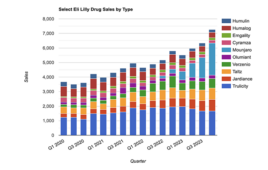One of the most daunting challenges facing
pharmaceutical scientists today are “undruggable proteins”—the approximately 80%
of proteins involved in human disease that do not interact with current drugs.
Yale University researchers have identified
a novel way to design drugs for these previously inaccessible proteins. The
research was published in Chemistry &
Biology.
“There is enormous interest in molecules
that can both traverse cell membranes and inhibit interactions between
proteins,” said Alanna
Schepartz, the Milton Harris ’29 PhD Professor of
Chemistry, director of the Yale Chemical Biology Institute and senior author of
the paper. “Proteins and polypeptides are very good at inhibiting interactions
between proteins in a test tube. We have identified a signal that helps these
proteins enter the cell.”
Most drugs today are very small molecules
and fit snuggly into relatively deep pockets in a protein, usually to inhibit a
chemical reaction. But many proteins involved in disease do not perform
chemical reactions. Instead they bind to other proteins, or DNA, or RNA. It has
proven extremely difficult to design small molecules that inhibit these binding
interactions.
Although proteins are used as drugs today,
they operate almost exclusively in areas outside the cell, not within the cells
where many disease processes originate.
Schepartz and her team identified a
molecular signal that allows potentially therapeutic proteins to hitch a ride
into cells using vesicles, or small packets of molecular information that fuse
with membranes of cells in a process called endocytosis. The signal helps the
protein escape from the vesicle to reach the interior of the cell.
“We are very interested to understand how
this release signal works, as it may allow researchers to engineer molecules to
follow a prescribed pathway into cell,” Schepartz said.
Source: Yale University
Filed Under: Drug Discovery




